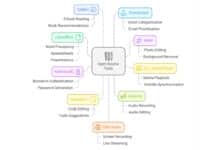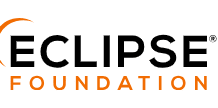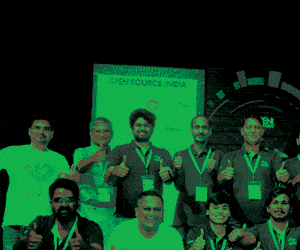In an era where our lives are intertwined with digital experiences, the apps we use daily are more than just lines of code—they are gateways to our interactions, our work, and our leisure. But what goes into building these seamless, efficient, and secure applications? The answer lies in the dynamic world of open source technologies.
Imagine embarking on a journey where the tools you need are not only freely accessible but are constantly evolving through the contributions of a global community. This is the realm of open source—a vibrant ecosystem where collaboration and transparency reign supreme. Open source technologies have revolutionised the way we approach mobile and web app development, offering a treasure trove of frameworks, libraries, and tools that empower developers to create with unparalleled freedom and innovation.
Choosing the right development framework
Every great journey begins with a map, and in the world of app development, your map is your choice of framework. The right framework can be the difference between a smooth voyage and a turbulent one. But how do you choose the right one amidst a sea of options?
Project requirements: The first step is understanding the unique needs of your project. Are you building a simple website or a complex enterprise application? Each project has its own set of requirements that will dictate the most suitable framework.
Community support: In the open source world, community is everything. A robust community means regular updates, extensive documentation, and a wealth of plugins and extensions. Frameworks like React, Angular, and Vue.js boast some of the most active communities, ensuring you’re never far from help or new features.
Scalability and performance: Your app’s ability to grow and handle increased load is crucial. Frameworks like Django for web development and Flutter for mobile apps are renowned for their scalability and performance, making them ideal choices for projects expected to grow over time.
Security: With cyber threats lurking around every corner, security is non-negotiable. Open source frameworks come with built-in security features, but the real advantage is the community’s vigilance—any vulnerabilities are quickly identified and patched.
In essence, the framework you choose is your app’s foundation, setting the stage for everything that follows. As you navigate this decision, consider not only the present needs of your project but its future ambitions as well.
Must-try open source mobile app development frameworks
Here are some must-try open source mobile app development frameworks that have proven their mettle in the developer community.
Flutter: Picture a single codebase that effortlessly creates beautiful apps for both Android and iOS. Flutter, with its rich set of pre-designed widgets and rapid development capabilities, offers just that. Its hot-reload feature makes it a favourite among developers for quick iterations and seamless testing.
React Native: Developed by Facebook, React Native has revolutionised mobile app development by enabling developers to write code once and deploy it across multiple platforms. Its component-based architecture and strong community support make it a versatile choice for both startups and established enterprises.
Kendo UI: This framework offers a comprehensive set of UI components specifically designed for creating high-performance, responsive apps. Its integration with popular frameworks like Angular and React further enhances its appeal, providing developers with flexibility and control over their projects.
Onsen UI: Tailored for mobile app development, Onsen UI simplifies the creation of hybrid and progressive web apps. Its compatibility with various frameworks and focus on performance ensures that your apps not only look great but also perform seamlessly across devices.
Framework7: For those looking to build apps with a native feel using web technologies, Framework7 is a game-changer. It offers a full suite of UI components and tools that mimic the look and feel of native apps, making it an excellent choice for developers aiming to create visually appealing and highly functional mobile applications.
These frameworks are not just tools; they are the ships that will carry your app from concept to reality, each offering unique strengths to help you navigate the diverse waters of mobile app development.
Securing your web and mobile apps with open source solutions
In a digital landscape where data breaches and cyberattacks make headlines almost daily, securing your web and mobile applications is paramount. Open source solutions offer a robust and transparent approach to fortifying your applications against these threats. Imagine a vigilant community of developers, constantly on the lookout for vulnerabilities and swiftly creating patches to keep your applications safe. This is the power of open source security.
To effectively secure your apps, it’s essential to understand the landscape of threats. Common security threats include:
Cross-site scripting (XSS): This occurs when malicious scripts are injected into web pages viewed by other users. These scripts can hijack user sessions, deface websites, or redirect users to malicious sites.
SQL injection: Attackers exploit vulnerabilities in a web application’s software by injecting malicious SQL code into a query, allowing them to manipulate the database and access sensitive information.
Data breaches: Unauthorised access to sensitive data, such as personal information or financial records, can lead to significant harm to users and organisations.
Securing your applications requires a multi-faceted approach. Here are some open source tools and best practices to consider.
OWASP (Open Web Application Security Project): OWASP provides a wealth of resources, including the OWASP Top Ten list, which identifies the most critical web application security risks. Tools like OWASP ZAP (Zed Attack Proxy) can help you find and fix security vulnerabilities.
Content Security Policy (CSP): Implementing CSP can significantly reduce the risk of XSS attacks by specifying which dynamic resources are allowed to load.
Secure coding practices: Following secure coding practices is essential. This includes validating and sanitising user inputs, using parameterized queries to prevent SQL injection, and employing encryption for sensitive data.
Web Application Firewalls (WAF): A WAF can help protect your applications by filtering and monitoring HTTP requests, blocking malicious traffic before it reaches your application.
With the collective expertise of the open source community at your disposal, you can build robust, secure applications that stand strong in the face of adversity.
Testing your web and mobile apps with open source tools
In the quest to build reliable, high-performance web and mobile applications, testing is your guiding star. Imagine an intricate dance, where every step ensures that your application is bug-free, efficient, and ready to deliver a flawless user experience. Open source testing tools provide the rhythm and structure to this dance, empowering developers to catch issues early and refine their code with precision.
Testing is not a mere formality—it’s a crucial part of the development lifecycle. It ensures that your application performs well under various conditions and remains secure against potential threats. Through rigorous testing, you can identify and fix performance bottlenecks, security vulnerabilities, and usability issues, ultimately enhancing the quality of your application.
Here are some essential open source tools and frameworks that can help you conduct comprehensive testing for your web and mobile applications.
Selenium: Selenium is the gold standard for web application testing. It allows you to automate browser actions, making it ideal for functional and regression testing. With Selenium WebDriver, you can write tests in multiple programming languages, including Java, Python, and JavaScript, and execute them across different browsers.
Appium: For mobile app testing, Appium is a powerful choice. It supports automation of native, hybrid, and mobile web applications for both Android and iOS platforms. Appium leverages the WebDriver protocol, making it easy to write tests using standard Selenium syntax and tools.
JUnit: JUnit is a widely-used testing framework for Java applications. It provides annotations and assertions to define and validate test cases. JUnit’s integration with popular build tools like Maven and Gradle ensures seamless incorporation into your CI/CD pipeline.
Jest: For JavaScript and React applications, Jest is a delightful testing framework. Developed by Facebook, Jest offers an all-in-one solution with built-in support for mocking, code coverage, and snapshot testing. Its zero-configuration setup and fast test execution make it a favourite among developers.
Mocha: Mocha is a flexible JavaScript testing framework that runs on Node.js. It provides a rich set of features for asynchronous testing, allowing you to create robust test suites for both backend and frontend applications. Mocha’s compatibility with assertion libraries like Chai adds to its versatility.
To make the most of these tools, follow these best practices.
Write comprehensive test cases: Cover all possible scenarios, including edge cases, to ensure thorough testing. Use unit tests for individual components, integration tests for combined components, and end-to-end tests for the entire application.
Automate testing: Automate as much of the testing process as possible to increase efficiency and reduce the chance of human error. Automated tests can be run frequently, ensuring that new changes do not introduce bugs.
Use test data management: Manage your test data carefully to ensure consistency and reliability in your tests. Use tools and scripts to generate, refresh, and clean up test data as needed.
Monitor test results: Regularly review test results to identify patterns and recurring issues. Use continuous monitoring tools to keep track of your application’s performance and security in real-time.
Integrate testing into CI/CD pipelines: Make testing an integral part of your CI/CD pipeline to catch issues early and ensure that only thoroughly tested code is deployed to production.
Testing is the bedrock of quality assurance in software development. By leveraging open source tools and adhering to best practices, you can build applications that are not only high-performing and secure but also reliable and delightful for your users.
Building progressive web apps (PWAs)
In the evolving landscape of web development, progressive web apps (PWAs) have emerged as a game-changing innovation. Imagine a web application that combines the best of both worlds—the seamless experience of a mobile app and the wide reach of a website. PWAs offer this unique blend, delivering fast, reliable, and engaging user experiences across all devices and platforms.
What are PWAs and why they are important
PWAs are web applications that leverage modern web technologies to provide app-like experiences. They are built using standard web technologies such as HTML, CSS, and JavaScript, but they come with additional capabilities that make them feel and function like native apps. Key features of PWAs include:
- Offline functionality: PWAs can work offline or in low-network conditions, thanks to service workers that cache resources and enable offline access.
- App-like interface: PWAs offer a user experience similar to native apps, with smooth navigation, animations, and responsive design.
- Installation: Users can install PWAs on their home screen without needing to visit an app store. This provides quick access and enhances user engagement.
- Push notifications: PWAs can send push notifications, keeping users informed and engaged even when the app is not open.
These features make PWAs crucial for businesses aiming to provide a superior user experience, reach a broader audience, and increase user retention.
Frameworks and tools for developing PWAs
Building a PWA involves several key components and tools. Here are some popular frameworks and tools that can help you get started.
- Angular: Angular has built-in support for building PWAs. With Angular CLI, you can easily add PWA capabilities to your Angular project by generating a service worker and configuring the necessary files.
- React: Although React does not have built-in PWA support, libraries like Create React App simplify the process. By adding a service worker and configuring it, you can transform your React app into a PWA.
- Vue.js: Vue.js provides plugin such as Vue CLI PWA plugin that facilitate the creation of PWAs. These plugins handle the setup and configuration, allowing you to focus on building your application.
- Workbox: Workbox is a set of libraries and node modules that make it easy to add offline support to your web apps. It simplifies service worker creation and management, enabling efficient caching and background sync.
Best practices for building high-performance PWAs
To ensure your PWA delivers an optimal user experience, follow these best practices.
- Responsive design: Design your PWA to work seamlessly across different devices and screen sizes. Use flexible grids, layouts, and media queries to ensure a consistent experience.
- Efficient caching: Utilise service workers to cache essential resources, enabling offline functionality and faster load times. Implement cache strategies that balance freshness and performance.
- Fast load times: Optimise your PWA for speed by minimising JavaScript, CSS, and HTML files. Use techniques such as lazy loading and code splitting to reduce initial load times.
- Secure your app: PWAs must be served over HTTPS to ensure data security and integrity. Implement HTTPS and use security headers to protect your application from threats.
- Engaging user experience: Leverage features like push notifications and home screen installation to keep users engaged. Use web app manifests to define your PWA’s appearance and behaviour when installed.
- Progressive enhancement: Build your PWA using progressive enhancement principles. Ensure your app works on all browsers and devices, providing basic functionality to older browsers while offering enhanced features to modern ones.
By embracing PWAs and following best practices, you can create applications that stand out in the crowded digital landscape, delivering a seamless and captivating experience to users.
Open source technologies offer powerful frameworks, tools, and best practices for building high-performance, secure, and scalable applications. From React Native for mobile to Django and Node.js for web, these solutions streamline development while fostering innovation and community collaboration. By prioritising user-centred design, performance optimisation, and robust security measures, developers can ensure their apps meet modern standards.












































































